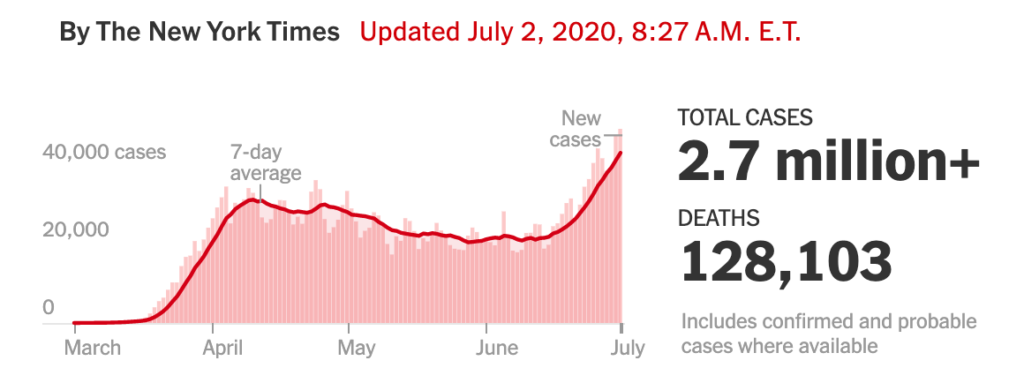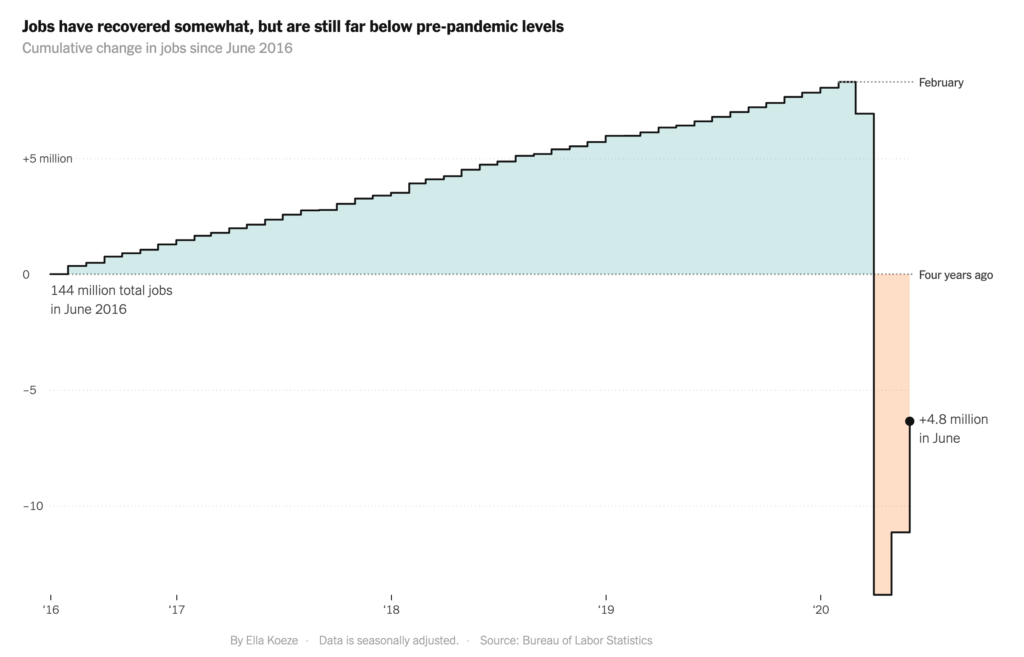You could argue that employment numbers look better this month, meaning the economy is headed toward recovery. New government numbers showed payrolls added 4.8 million jobs in June. The unemployment rate lowered to 11.1% from 13.3% last month. Similarly, ADP’s latest employment report shows an additional 2.3 million jobs.

The markets responded positively to the news this morning, with the S&P 500 up almost 1% as of this writing. And that’s after the markets had their best performing quarter in more than 20 years.
However, digging deeper, we see all may not be well. Coronavirus cases are rising, eviction moratoria end next month, and some employment sectors aren’t doing so hot: The gap in black and white employment figures is at its widest in 5 years, according to Reuters.


In other news, PwC released their latest research on remote work. Here’s a summary: “A flexible workweek has broad support.”
- Office workers say they’d like to have the option to work from home more frequently, even after COVID-19 is no longer a threat. They also want help setting work-life boundaries to improve their own productivity.
- Employers need to prepare for flexible workweeks, as a majority of office workers would like options to work remotely at least one day a week. More than half (55%) of executives expect to offer that option.
- The office isn’t obsolete yet, but it is changing. While the COVID-19 crisis showed that staff can interact well when apart, people still want to engage with colleagues in person. It’s why 50% go into the office.
- While 30% of executives foresee the need for less office space due to remote work, 50% are anticipating an increase due to longer-lasting requirements for social distancing or growth in their workforce.
We still have (remote) work to do.

